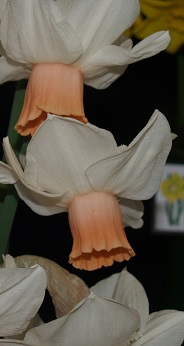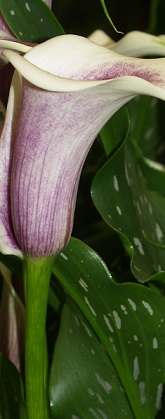 Bulbs are a great way of adding seasonal colour to the garden. Alternatively, this group of plants includes some of the most in demand cut flowers around.
Bulbs are a great way of adding seasonal colour to the garden. Alternatively, this group of plants includes some of the most in demand cut flowers around.
How to Plant Bulbs
As a rule of thumb most bulbs are planted at twice the depth of the size of the bulb (so a 2cm bulb is planted 4cm deep). The same applies to space between bulbs although you can plant further apart if you intend to naturalise bulbs over time (this gives them more space to multiply before you need to lift and replant them because of over-crowding.
Sunny but cool positions are excellent. They can often burn if there is too much heat or wind.
Water them during the growing phase but not once they are dormant.
Some bulbs such as tulips for example, need a chilling period to initiate flowering. Buy these early and store them in the fridge (not the freezer) for a few weeks before planting out in the garden.
They can be planted using a trowel to create a hole deep enough and wide enough to accommodate the bulb. The bulb is placed in the hole with the basal plate (i.e. the bottom of the bulb) resting on the bottom of the hole; the hole is then back–filled with soil and gently firmed down. Cover the soil with a 2-5cm layer of mulch (pea straw or fine bark are ideal) to conserve moisture.
Always make sure that you plant bulbs to the recommended depth:
- If you plant them too deep their shoots may not reach the surface.
- If you plant them too high they will topple over once they begin to grow.
Ensure that the soil is both friable and firm to allow root penetration and stability of the emerging plant.
Feeding Bulbs
 When you first plant out bulbs, you should provide them with a friable, rich, organic, well drained loam; they thrive on soil which has been prepared with rotted manure or compost prior to planting. Improve your soil with compost and make sure it is well drained; bulbs will not grow well in heavy soils with low nutrients. If you have heavy soils plant them in raised beds or pots.
When you first plant out bulbs, you should provide them with a friable, rich, organic, well drained loam; they thrive on soil which has been prepared with rotted manure or compost prior to planting. Improve your soil with compost and make sure it is well drained; bulbs will not grow well in heavy soils with low nutrients. If you have heavy soils plant them in raised beds or pots.
Swollen roots, bulbs, corms or rhizomes are actually food storage units; the plants use photosynthesis, and also nutrients available in the soil (when in leaf - but mainly after flowering is finished), to store energy for the following season’s growth and flowering. Due to this they do not need heavy feeding when first planted as they will initially utilise this stored food supply. The best time then to fertilise bulbs that become dormant is after they have flowered. It is for this reason that you should only remove the old leaves from bulbs when they are no longer green. If you have not removed the flowers to use in flower arrangements, it can also be beneficial to remove the spent flower heads, as this will prevent the plant from putting its energy into seed creation.
Because they are all grown for flowers, they generally need larger amounts of potash than other nutrients. They usually also have a dormant period and can be susceptible to rotting if left in a moist situation during dormancy (i.e. their metabolism is slow in dormancy - this means their defence mechanisms are lower). Some bulbs in some areas may need to be lifted.
Watch out for bulb rots, especially in heavy, wet soils - good drainage will help prevent this problem. The main pests of bulbs are aphids, bulb flies and soil nematodes. Aphids and bulb flies can be controlled by spraying with sprays
Fertilizers for Bulbs
As indicated earlier bulbs usually have sufficient nutrients stored within the dormant tissue to produce flowers, without additional feeding; however, growth will be stronger and the bulb that forms when the plant enters dormancy again however with soil fertility.
You can get concentrated, fast acting fertilizers (which will feed more to the plant, quicker); or slower acting, long term fertilizers, and there are many possibilities in between these two extremes. Most bulbs are better with slower acting fertilisers. Usually a slower acting fertilizer is more appropriate with planting - particularly in sandy soils.
- Avoid stronger fertilisers directly contacting tender tissues (e.g. leaves, new roots or the dormant bulb).
- Organic fertilisers are in the main slower; as are pellet fertilisers or anything that does not dissolve readily and thoroughly in water.
